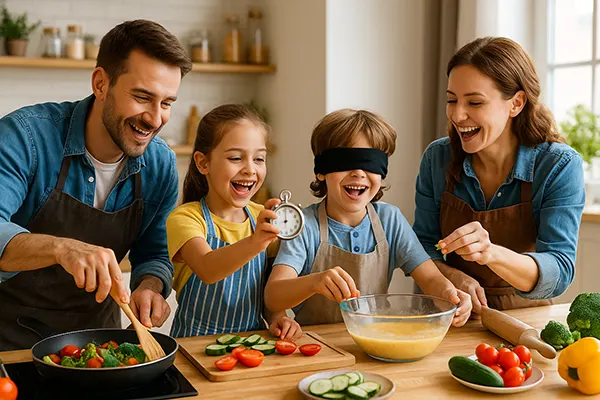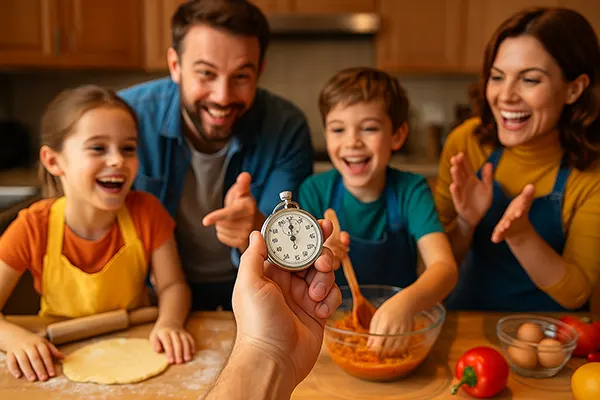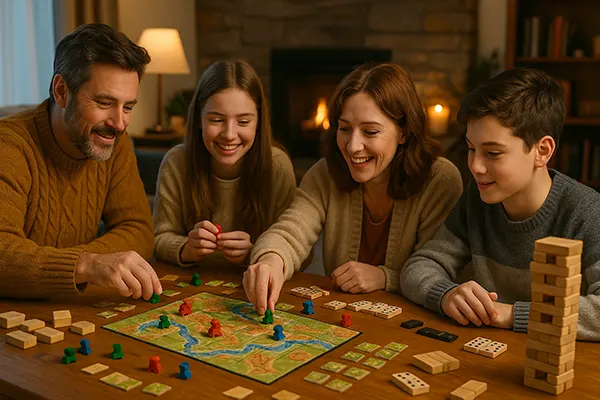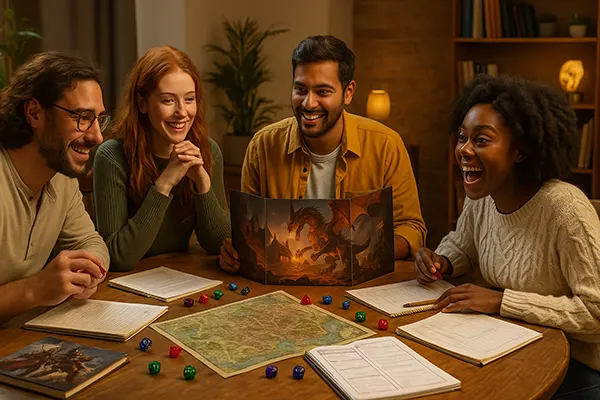
Cooking Games: How to Gamify the Kitchen for Kids and Adults
Combining food preparation with game elements is a growing trend that adds fun, motivation, and engagement to what many view as a routine task. Whether you’re trying to involve your children in home cooking or simply want to spice up your culinary experience, gamification techniques can completely transform your kitchen into a vibrant space of creativity and collaboration.
Kitchen Quests and Cooking Challenges
Introducing game-based tasks and competitions into everyday cooking not only boosts engagement but also improves practical skills. These activities encourage participants to think creatively and solve problems on the spot. One popular idea is hosting family or friend-based challenges like “Who can make the best pizza in 20 minutes?” or “Cook a pasta dish blindfolded.” Such tasks combine time limits, surprise ingredients, or limited tools to make the process more dynamic.
Another effective format involves step-by-step quests. These are structured like levels in a video game, where each phase involves completing a specific cooking skill — from chopping vegetables to presenting the final plate. Each level unlocks a new recipe or earns a symbolic prize like “Best Presentation” or “Sauce Master.”
Team-based cooking duels are also a great way to gamify the kitchen, especially during gatherings or parties. Splitting participants into teams and assigning them identical ingredients encourages cooperation, creativity, and a bit of healthy competition — all while reinforcing food knowledge and technical skills.
Fun, Safety, and Real-Life Learning
While cooking competitions add excitement, they should always be designed with safety and learning in mind. For younger participants, it’s best to assign age-appropriate roles, such as mixing, decorating, or plating. Adults can handle complex and risky tasks involving heat or knives.
Clearly defined rules and rewards help keep the experience focused. For example, rewarding creativity, cleanliness, or teamwork instils good kitchen habits. Instead of just focusing on the result, reward effort and improvement to maintain a positive, inclusive environment.
These games not only entertain but also promote valuable real-life lessons. Children learn about time management, healthy food choices, and even cultural diversity through recipes from different countries. Adults rediscover cooking as a form of recreation, not just responsibility.
Digital Tools and Mobile Apps for Culinary Gamification
In the digital era, mobile applications have taken cooking gamification to a new level. Apps like Kitchen Stories and Tasty now offer built-in challenge modes, step-by-step interactive tutorials, and even social leaderboards where users can share their creations. These digital companions serve as modern recipe books, enriched with visuals and game-like features.
Features such as “weekly cooking challenges” or “random ingredient spinners” introduce novelty and fun to meal planning. Users can earn virtual badges for trying new cuisines or successfully completing tasks like cooking under a time limit or using a new technique. These elements keep motivation high, especially for beginners.
For families, apps with child-friendly modes encourage joint participation. Simple tasks such as matching ingredients or following voice instructions help kids feel more involved. Gamified tutorials provide a soft entry into cooking while ensuring structure and safety.
Blending Real and Virtual Experiences
The most effective digital tools are those that balance virtual guidance with real-world action. Instead of just watching videos, users are encouraged to get hands-on. This blend is especially powerful for parents who want their children to learn by doing, not just observing.
Apps with scoring systems, time trackers, or feedback options introduce a gentle competitive edge. Some also integrate with smart kitchen devices, making the process even more interactive — for instance, using a smart scale to measure ingredients during a timed recipe challenge.
It’s also worth mentioning the community aspect. Many of these tools allow users to share their dishes and gain reactions or comments. This fosters a sense of achievement and belonging, reinforcing positive experiences around cooking.

How to Engage Children Through Playful Cooking
Getting children interested in cooking can be a challenge — but when the process feels like play, they are more likely to participate enthusiastically. Start by turning simple tasks into missions: “Mix this batter to unlock the next step,” or “Find the hidden spice in the cupboard.” These micro-goals work like game objectives, offering a sense of progress and achievement.
Using costumes or storylines can further boost immersion. Let children pretend to be chefs, restaurant owners, or characters on a cooking adventure. Add role-playing elements — such as presenting the food to family “judges” — and you create a mini cooking show at home.
Another method is using DIY reward systems. Sticker charts, tokens, or collectible recipe cards can be earned with each task completed. This helps form habits and adds tangible progress for the child to track and feel proud of.
From Fun to Skill-Building
Play-based cooking is more than just entertainment. It introduces children to basic math through measuring, enhances reading through recipe instructions, and builds patience and focus. Even preschoolers can start with no-heat tasks like washing fruit or kneading dough.
Older children can be gradually introduced to more complex actions, such as peeling or seasoning. Over time, these interactions foster a sense of responsibility and independence in the kitchen. The earlier they start, the more confident they’ll become.
To make the experience even more meaningful, involve kids in planning meals. Let them pick a dish to cook each week. This not only motivates them but also encourages better eating habits, as they’re more likely to enjoy meals they helped prepare.



